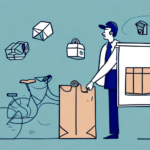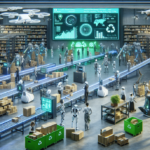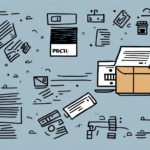What Is On-Demand Delivery and How Can It Benefit You?
On-demand delivery is a service that allows customers to order goods or services and have them delivered directly to their doorstep quickly and efficiently. Enabled by advanced technology, this service connects consumers with service providers who fulfill orders on a just-in-time basis. The convenience offered by on-demand delivery has led to its widespread adoption, particularly among individuals with busy schedules or limited access to physical stores. In this article, we will delve into the history, technology, advantages and disadvantages, impact on e-commerce, future trends, and practical tips for maximizing the benefits of on-demand delivery services.
The History and Evolution of On-Demand Delivery Services
Early Beginnings
The concept of on-demand delivery dates back to traditional courier services that transported goods between businesses and consumers. Over time, the rise of urbanization and advancements in communication technologies shifted the focus towards enhancing consumer convenience.
Rise of Food Delivery
Pizza delivery services were among the first to adopt the on-demand model, offering customers the ability to receive their orders within minutes of placing them. This model proved successful and laid the groundwork for other food delivery services.
Expansion to Groceries and General Merchandise
Following the success in the food industry, companies expanded into grocery and general merchandise delivery. Platforms like Instacart and Amazon Fresh began offering same-day or next-day delivery options, catering to a broader range of consumer needs.
Impact of Smartphones and Mobile Apps
The proliferation of smartphones significantly boosted the on-demand delivery industry. Mobile apps provided a user-friendly interface for placing orders, tracking deliveries in real-time, and managing payments, leading to increased consumer adoption.
According to a Statista report, the global on-demand delivery market was valued at approximately $200 billion in 2022 and is projected to reach $400 billion by 2026.
Understanding the Technology Behind On-Demand Delivery
App-Based Platforms
At the core of on-demand delivery services are app-based platforms that connect customers with service providers. These platforms handle order placement, tracking, and communication between parties in real-time.
GPS Tracking Systems
GPS technology enables accurate tracking of delivery personnel, facilitating efficient route optimization and timely deliveries. This technology is crucial for managing large fleets and ensuring high service reliability.
Payment Processing Systems
Secure and seamless payment processing is essential for on-demand services. Advanced payment gateways integrate with the platforms to handle transactions securely, supporting multiple payment methods such as credit cards, digital wallets, and cryptocurrencies.
Artificial Intelligence and Machine Learning
AI and machine learning algorithms predict demand patterns, optimize delivery routes, and personalize customer experiences by recommending products based on past behavior. According to a McKinsey report, AI can improve delivery efficiency by up to 30%.
Robotics and Automation
The integration of robotics and automation, including drones and autonomous vehicles, is transforming last-mile delivery. Companies like Amazon and Google are actively testing these technologies to enhance speed and reduce operational costs.
The Pros and Cons of Using On-Demand Delivery Services
Advantages
- Convenience: Customers receive goods and services at their doorstep without the need to visit physical stores.
- Time-Saving: Quick delivery options, sometimes within an hour, cater to urgent needs.
- Real-Time Tracking: Customers can monitor their orders in real-time, enhancing transparency and trust.
- Wide Range of Options: From food to groceries to general merchandise, the variety is extensive.
Disadvantages
- Cost: On-demand services can be more expensive than traditional delivery due to the premium on speed and convenience.
- Limited Availability: Some services may not cover all geographic areas or types of goods.
- Environmental Impact: Increased delivery trips can lead to higher carbon emissions and traffic congestion.
- Labor Concerns: Delivery personnel may face challenging working conditions, including low pay and high pressure.
Who Can Benefit from On-Demand Delivery Services?
Consumers
Busy professionals, parents with young children, seniors, and individuals with disabilities or mobility issues find on-demand delivery services invaluable for accessing essential goods and services without the need to travel.
Businesses
Restaurants, grocery stores, healthcare providers, and other businesses can leverage on-demand delivery to enhance their service offerings, reach new customers, and increase revenue streams.
Rural and Remote Communities
Individuals in rural or underserved areas benefit from on-demand delivery by gaining access to products and services that may otherwise be unavailable due to geographic limitations.
How On-Demand Delivery is Changing the Face of E-commerce
Enhanced Customer Satisfaction
The ability to receive orders within hours rather than days has significantly boosted customer satisfaction and loyalty. Fast delivery options meet the growing consumer demand for immediate gratification.
Expansion of Market Reach
Businesses can expand their reach beyond local markets, tapping into national and even global customer bases without the need for a physical presence in every location.
Contribution to the Gig Economy
On-demand delivery has fueled the growth of the gig economy by creating flexible employment opportunities for delivery drivers and other service providers.
Real-Time Tracking and Transparency
Advanced tracking systems provide customers with real-time updates on their orders, fostering a sense of transparency and reliability that enhances the overall shopping experience.
According to a eMarketer report, e-commerce sales worldwide reached $5.7 trillion in 2023, with a significant portion attributed to on-demand delivery services.
The Future of On-Demand Delivery: Predictions and Trends
Drone and Autonomous Vehicle Deliveries
Drone technology and autonomous vehicles are poised to revolutionize last-mile delivery by reducing delivery times and operational costs. Companies like Amazon are conducting extensive trials to integrate these technologies into their delivery networks.
Artificial Intelligence and Predictive Analytics
AI and machine learning will continue to optimize delivery routes, forecast demand, and personalize customer interactions, making delivery services more efficient and customer-centric.
Sustainability Initiatives
As consumer awareness of environmental issues grows, on-demand delivery services are adopting eco-friendly practices such as using electric vehicles, bicycles, and implementing carbon-neutral delivery options.
Subscription-Based Models
Subscription services offering unlimited or discounted deliveries for a monthly fee are gaining popularity, providing consumers with cost-effective options for frequent deliveries.
Integration with Smart Homes
Future integrations may include smart home devices that allow for seamless ordering and delivery management, further enhancing convenience for users.
Top On-Demand Delivery Providers and Their Features
- Uber Eats: Specializes in food delivery from local restaurants with real-time tracking and a wide variety of cuisine options.
- DoorDash: Offers both local and national restaurant deliveries, along with grocery and convenience store options.
- Postmates: Provides delivery services for a broad range of goods, including food, groceries, and retail items.
- Grubhub: Focuses on restaurant food delivery with an extensive network of partner restaurants.
- Instacart: Specializes in grocery delivery from local stores, offering same-day delivery options and personalized shopping experiences.
Each of these providers offers unique features catering to different consumer needs, making it essential for users to choose the service that best aligns with their specific requirements.
How to Choose the Right On-Demand Delivery Service for Your Business
Assessing Delivery Times
Evaluate the speed and reliability of the delivery service. Faster delivery times can enhance customer satisfaction but may come at a higher cost.
Cost Considerations
Understand the pricing structure, including delivery fees, service charges, and any additional costs associated with premium services.
Range of Available Goods
Ensure the service can handle the types of products your business offers. Some services may specialize in certain categories, such as food or groceries.
Customer Support and Reliability
Choose a provider with a strong reputation for customer service and reliability to minimize disruptions and handle any issues that may arise efficiently.
Integration Capabilities
Ensure that the delivery service can seamlessly integrate with your existing systems, such as inventory management and order processing platforms.
According to a Forbes article, businesses should also consider the scalability of the delivery service to accommodate future growth and changing market demands.
The Cost Factor: Understanding Pricing Models for On-Demand Delivery Services
Delivery Fees
Most on-demand services charge a delivery fee, which can vary based on the distance, urgency, and size of the order. Fees can range from a few dollars for short distances to higher charges for expedited or long-distance deliveries.
Subscription Fees
Some companies offer subscription-based models where customers pay a monthly or annual fee for unlimited or discounted deliveries. Examples include Amazon Prime and DoorDash's DashPass.
Markup on Goods
In certain cases, service providers may apply a markup on the cost of goods being delivered, particularly for convenience items or premium products.
Surge Pricing
During peak times or high-demand periods, some delivery services implement surge pricing to balance supply and demand, resulting in higher fees for faster service.
Hidden Costs
Be aware of any additional fees, such as handling charges, service fees, or fees for special delivery instructions, which can impact the overall cost.
Understanding the various pricing models is crucial for businesses to effectively budget and manage their delivery expenses. A Business.com article highlights the importance of transparent pricing to maintain customer trust and satisfaction.
Tips for Maximizing the Benefits of On-Demand Delivery Services
Optimize Delivery Routes
Utilize route optimization software to ensure efficient delivery paths, reducing time and fuel costs while improving delivery speed.
Offer Incentives
Provide incentives such as free or discounted delivery for orders over a certain amount to encourage higher spending and repeat business.
Leverage Customer Data
Analyze customer data and feedback to tailor services to their preferences, improving satisfaction and loyalty.
Partner Strategically
Collaborate with reputable delivery providers that align with your business values and can handle your specific delivery needs effectively.
Implement Eco-Friendly Practices
Adopt sustainable delivery methods, such as using electric vehicles or bicycles, to appeal to environmentally conscious consumers and reduce your carbon footprint.
Invest in Technology
Integrate advanced technologies like AI and machine learning to enhance delivery efficiency, predict demand, and personalize customer interactions.
According to a Harvard Business Review article, businesses that strategically implement these tips can significantly enhance their operational efficiency and customer satisfaction.
The Impact of COVID-19 on On-Demand Delivery Services
Increased Demand
The COVID-19 pandemic led to a surge in demand for on-demand delivery services as lockdowns and social distancing measures limited access to physical stores.
Safety Measures
Delivery providers implemented additional safety protocols, such as contactless deliveries, to protect both customers and delivery personnel.
Acceleration of E-commerce Adoption
With more consumers turning to online shopping, businesses accelerated their adoption of e-commerce platforms and integrated on-demand delivery services to meet changing consumer behaviors.
Operational Challenges
The pandemic posed challenges such as managing increased order volumes, ensuring the safety of delivery workers, and dealing with supply chain disruptions.
Long-Term Changes
Many of the changes adopted during the pandemic, including enhanced safety measures and increased reliance on on-demand delivery, are expected to persist post-pandemic, shaping the future landscape of the industry.
A Wall Street Journal report highlights how COVID-19 has permanently altered consumer expectations and business models in the delivery sector.
Common Challenges Faced by On-Demand Delivery Service Providers
Managing Customer Expectations
Balancing the demand for fast delivery times with operational capabilities can be challenging, leading to potential dissatisfaction if expectations are not met.
Optimizing Delivery Routes
Efficient route planning is crucial to minimize costs and delivery times. Inaccurate predictions can result in longer delivery times and increased operational expenses.
Ensuring Safety and Security
Protecting goods during transit and ensuring the safety of delivery personnel are ongoing concerns, especially with the rise in high-value and sensitive deliveries.
Regulatory Compliance
Staying compliant with varying local, state, and federal regulations related to labor, transportation, and consumer protection can be complex and resource-intensive.
Maintaining Service Quality
Consistently delivering high-quality service despite fluctuations in demand and external factors like traffic or weather conditions is a persistent challenge.
Driver Retention and Satisfaction
Ensuring that delivery personnel are fairly compensated and have satisfactory working conditions is essential for maintaining a reliable delivery workforce.
A Forbes article discusses these challenges and potential strategies to overcome them, emphasizing the importance of innovation and adaptability in the industry.
Legal and Regulatory Issues Surrounding On-Demand Delivery Services
Labor Laws
On-demand delivery services must navigate labor regulations, including classifications of workers, wage laws, and benefits, which vary by jurisdiction.
Transportation Regulations
Compliance with transportation safety standards, vehicle regulations, and licensing requirements is essential to operate legally and avoid penalties.
Consumer Protection Laws
Ensuring compliance with consumer protection laws related to data privacy, transaction security, and dispute resolution is critical for maintaining consumer trust and avoiding legal issues.
Data Security and Privacy
Protecting customer data and maintaining the security of app-based platforms against cyber threats is paramount to prevent breaches and maintain compliance with data protection regulations like GDPR and CCPA.
Environmental Regulations
Adhering to environmental regulations related to emissions, waste management, and sustainability practices is increasingly important as governments implement stricter environmental policies.
Intellectual Property Rights
Protecting proprietary technologies, branding, and other intellectual property assets is essential for maintaining a competitive edge and preventing legal disputes.
According to a Lexology article, navigating the complex legal landscape requires ongoing vigilance and often the expertise of legal professionals to ensure comprehensive compliance.
Conclusion
On-demand delivery services offer a convenient and efficient way for customers to receive goods and services, while also providing opportunities for businesses to expand their customer base and reach new markets. To fully realize the benefits of on-demand delivery services, it is essential for businesses to understand the underlying technology, pricing models, and regulatory requirements. Additionally, continuously improving delivery processes and enhancing the customer experience are key to maintaining competitiveness in this rapidly evolving industry.




















